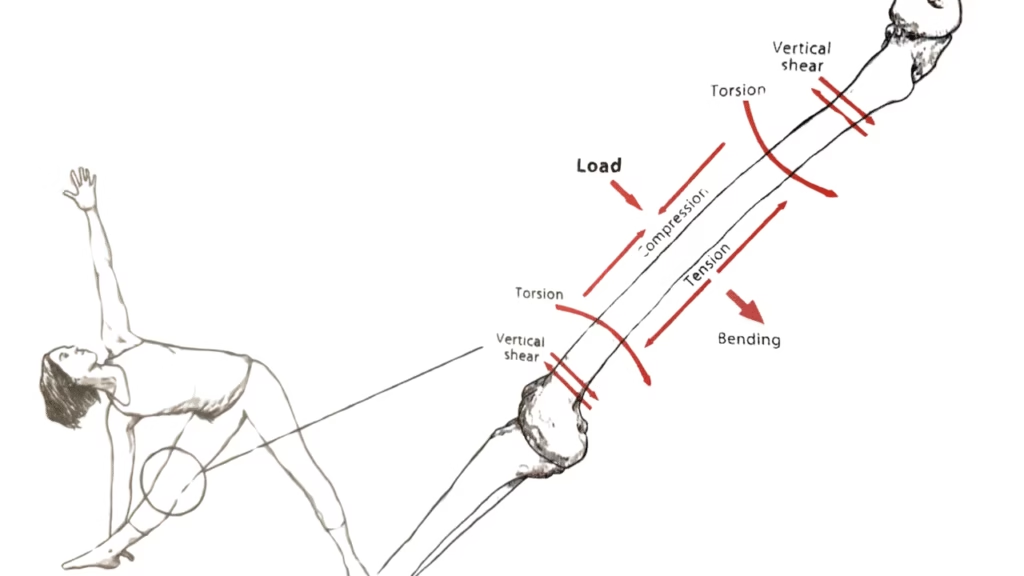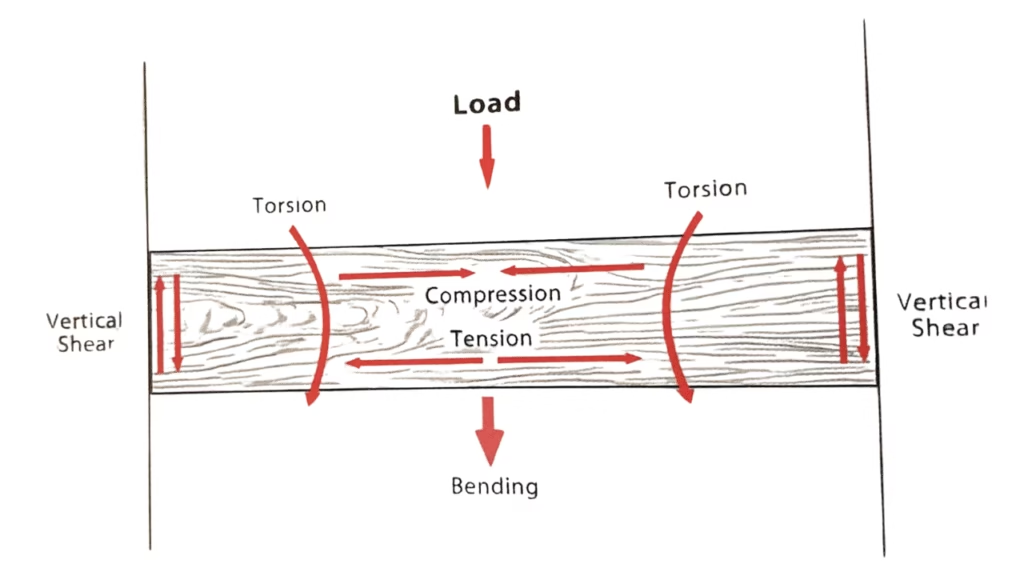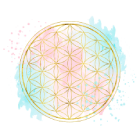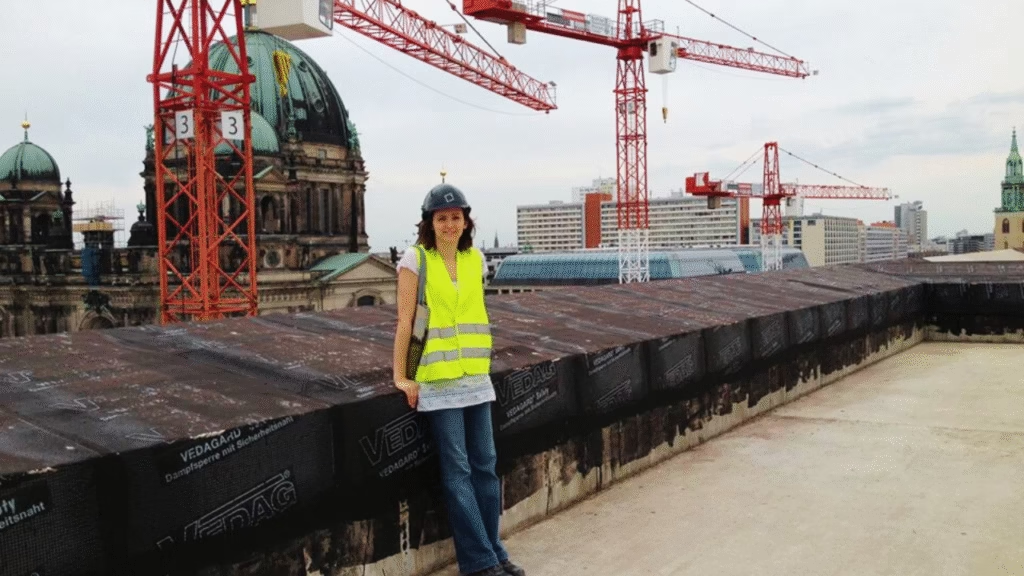What yoga teachers call stress, engineers call load..
Same stresses that act upon a wooden beam supported by two walls.. occur in our tissues when we do our yoga practice.
Vertical shearing in the joint at the knee as the femur tries to slide past the tibia.
Torsion or twist all along the femur as we anchor the foot and knee and try to externally rotate the hip.
The weight of the body creates compression through the length of the femur.
and there is a bending along the length of the femur that is creating both tension and compression

A big difference between a beam supporting a roof and our bones supporting us is that our bodies are self-repairing

Compression - a stimulus to bone growth and density
We compress tissues and bones in order to stimulate the body at the cellular level. Compression stimulates healing.
Our bones and cartilige need stress to stay strong and running away from stress makes us fragile.
The loss of bone density is know as osteopenia (from the Greek penia meaning “poverty”) if extreme it leads to ostheoporosis (“porous bone”) – dangerous weakening of the bones.
Protect your bones while you're young
When we’re young, our body makes new bone faster than it breaks down old bone and our bone mass increases.
After the early 20s this process slows, and most people reach their peak bone mass by the age 30. As people age, bone mass is lost faster than it’s created!
How likely you are to develop osteoporosis depends partly on how much bone mass you attained in your youth.Hence the more you can put into your “bank account” when you’re young, the longer your bones will stay strong as you age.
Peak bone mass is partly inherited and varies also by ethnic group. The higher your peak bone mass, the more bone you have “in the bank” and the less likely you are to develop osteoporosis as you age.
Paul Grilles masterfully explaining the stresses on the body during our yoga practice as well as why we can’t look the same in the same yoga posture
Foundation of a pain-free life
Hunching all day at the keyboard, tilting our heads forward over our phones and commuting long hours – our sedentary lifestyle is resulting in poor postures and for many in chronic pain.
For me yoga is all about functionality – using the pose to get into the body, opening up the „underused“ places that move too little, expanding the body so you can enjoy it and stay healthy even at older age.
“Motion is lotion” if we never move some areas, they become stiff and dry. Moving our bodies is fundamental to our overall wellbeing.
Just like a well-designed bridge must flex with changing conditions, our bodies need balance, mobility, and thoughtful stress to function at their best.
Yoga, much like civil engineering, is about understanding forces, alignment, and resilience – but applied to the human body.
By tuning into how we move, we can correct imbalances, reduce pain, and create a foundation that supports us for years to come.
If you’re curious to explore how yoga can support your posture, relieve tension, and help you move better – I’d love to guide you – I am a 500 hr yoga teacher and I hold a masters degree in civil engineering with a thorough understanding for anatomy and biomechanics.
Reference and inspiration for this blog post: Your body, your yoga by Bernie Clark

